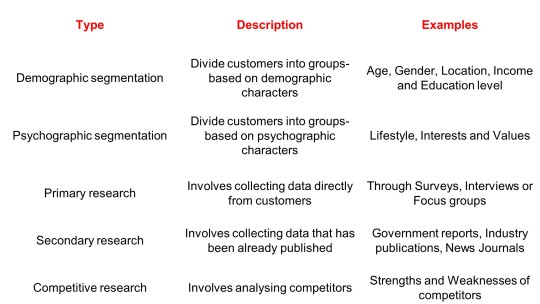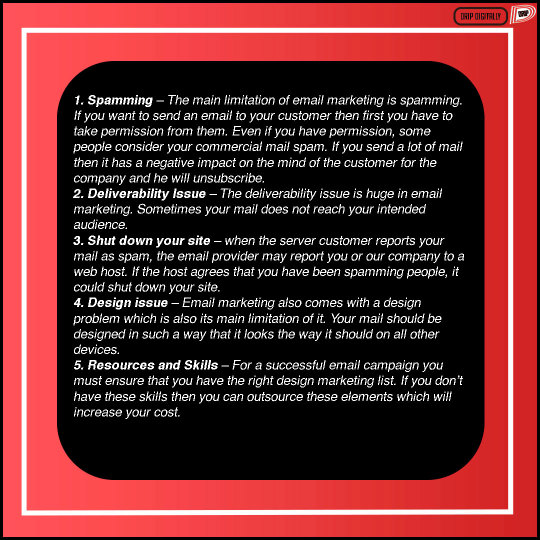#SegmentationStrategies
Explore tagged Tumblr posts
Text
Segmentation Strategies for Effective Email Marketing Reaching the Right Audience
Email marketing has been a cornerstone in the world of digital marketing for quite some time now. As businesses strive to establish meaningful connections with their audience, the importance of crafting targeted and relevant email campaigns cannot be overstated. In this article, we will start into the world of segmentation strategies for effective email marketing, exploring how businesses can reach the right audience with precision and impact.
My Best Recommended & Proven Way to Make $100 Daily — Watch THIS FREE Training to START >>

Understanding Segmentation
Definition and Basics
Segmentation in email marketing involves dividing a target audience into distinct groups based on certain criteria. This could include demographics, behaviors, geographic location, or psychographics. The idea is to tailor marketing messages to each segment’s unique characteristics, ensuring a higher level of relevance.
Significance in Email Marketing
Why is segmentation crucial in email marketing? The answer lies in personalization. By segmenting your audience, you can create highly targeted and personalized campaigns that resonate with recipients on a deeper level. This, in turn, leads to increased engagement, higher conversion rates, and improved customer loyalty.
Benefits of Segmentation in Email Marketing
Improved Relevance
One of the primary benefits of segmentation is the ability to deliver content that is highly relevant to the recipient. When your audience receives emails that speak directly to their needs, preferences, and interests, they are more likely to pay attention and take the desired actions.
Higher Engagement Rates
Segmented email campaigns often result in higher engagement rates. Whether it’s opening the email, clicking on links, or making a purchase, a well-targeted campaign significantly increases the likelihood of positive interactions.
Enhanced Customer Retention
By understanding your audience at a granular level, you can create campaigns that foster a sense of loyalty. Customers appreciate brands that “get” them, and segmentation allows you to build long-lasting relationships with your audience.
Types of Segmentation Strategies
Demographic Segmentation
Age and Gender Targeting
Understanding the age and gender demographics of your audience enables you to create content that resonates with specific age groups or genders. For example, a fashion retailer might have different campaigns for their teenage audience compared to their middle-aged customers.
Income-based Segmentation
Segmenting based on income levels allows businesses to tailor promotions and offers that align with the financial capacity of their audience. Luxury brands, for instance, might target high-income individuals with exclusive deals.
Educational Background Considerations
For businesses offering educational products or services, knowing the educational background of their audience can be invaluable. It helps in crafting content that suits the knowledge level and interests of the recipients.
Geographic Segmentation
Localized Offers
Tailoring promotions based on the geographic location of your audience can significantly boost engagement. This could include location-specific events, discounts, or product launches.
Climate-Based Campaigns
Understanding the climate of different regions allows businesses to offer products or services that are relevant to the weather conditions. A clothing retailer might promote winter wear to customers in colder regions while focusing on summer attire for warmer areas.
Time Zone Considerations
Sending emails at the right time is crucial for engagement. Geographic segmentation helps in adjusting email delivery times according to the time zone of the recipients, ensuring they receive the message at an optimal time.
My Best Recommended & Proven Way to Make $100 Daily — Watch THIS FREE Training to START >>
Behavioral Segmentation in Email Marketing
Purchase History Analysis
Studying the past purchasing behavior of your audience enables you to make personalized product recommendations. If a customer frequently buys athletic gear, a sports retailer might send them promotions related to new sports equipment arrivals.
Website Interaction Tracking
Analyzing how users interact with your website can provide valuable insights. If a customer frequently visits the “Sale” section, tailoring email campaigns with exclusive sale offers can be highly effective.
Email Engagement Patterns
Monitoring how subscribers engage with your emails allows for segmentation based on engagement levels. For instance, active subscribers might receive different content compared to those who haven’t opened emails in a while.
Psychographic Segmentation and its Impact
Personality Traits in Segmentation
Understanding the personality traits of your audience helps in creating campaigns that resonate with their values and preferences. For example, an adventure travel company might target thrill-seekers with daring vacation packages.
Lifestyle-Based Targeting
Segmenting based on lifestyle choices allows businesses to align their products or services with the interests and activities of their audience. A company selling eco-friendly products might target environmentally conscious consumers.
Value and Interest Alignment
Psychographic segmentation involves understanding the values and interests of your audience. Aligning your brand with these values creates a strong connection and increases the likelihood of customer loyalty.
Challenges in Segmentation
While segmentation offers numerous benefits, it’s not without its challenges. Addressing these challenges is crucial to ensure the effectiveness of your email marketing campaigns.
Data Accuracy
The success of segmentation relies on accurate data. Inaccurate or outdated information can lead to poorly targeted campaigns and, in some cases, damage the relationship with your audience.
Privacy Concerns
In an era where data privacy is a significant concern, businesses must be transparent about how they collect and use customer data. Failing to address privacy concerns can lead to a loss of trust and potential legal issues.
Keeping Up with Changes
Consumer behaviors and preferences evolve over time. Keeping up with these changes and adjusting segmentation strategies accordingly is an ongoing challenge. What worked well a year ago might not be as effective today.
Overcoming Segmentation Challenges
To maximize the benefits of segmentation, businesses must actively address the challenges that come with it.
Data Validation Techniques
Regularly validating and updating customer data is essential for maintaining accuracy. Implementing robust data validation techniques ensures that your segmentation is based on reliable information.
Transparency in Data Usage
Be transparent about how you collect and use customer data. Clearly communicate your data privacy policies, giving customers the confidence that their information is handled responsibly.
Regular Audits and Updates
Periodically audit and update your segmentation strategies. This involves analyzing the effectiveness of your current segmentation and making adjustments based on changing trends and customer behaviors.
Tools for Effective Segmentation
Several tools and platforms can aid businesses in implementing and optimizing their segmentation strategies.
CRM Systems
Customer Relationship Management (CRM) systems help businesses organize and manage customer data. They provide insights into customer interactions, allowing for more effective segmentation.
Analytics Platforms
Analytics platforms, such as Google Analytics, offer in-depth insights into website and campaign performance. Leveraging these tools allows businesses to refine their segmentation based on user behavior.
AI-driven Solutions
Artificial Intelligence (AI) is revolutionizing segmentation by automating the process and making it more intelligent. AI-driven solutions can analyze vast amounts of data to identify patterns and make real-time segmentation decisions.
Case Studies: Successful Email Marketing Campaigns
Let’s take a look at how some well-known brands have successfully implemented segmentation strategies in their email marketing campaigns.
Amazon’s Personalized Recommendations
Amazon is a prime example of effective segmentation. By analyzing customer purchase history and browsing behavior, Amazon delivers personalized product recommendations, enhancing the overall shopping experience.
Spotify’s Tailored Playlists
Spotify uses behavioral segmentation to curate personalized playlists for each user. By tracking listening habits, favorite genres, and artists, Spotify ensures that users receive music recommendations tailored to their tastes.
Airbnb’s Location-Based Offers
Airbnb utilizes geographic segmentation to offer location-specific deals and recommendations. This ensures that users receive relevant travel options based on their preferred destinations.
My Best Recommended & Proven Way to Make $100 Daily — Watch THIS FREE Training to START >>
Measuring the Success of Segmentation
To gauge the success of your segmentation strategies, it’s essential to track key performance indicators (KPIs).
Key Performance Indicators (KPIs)
Open Rates: Measure the percentage of recipients who open your emails.
Click-Through Rates: Track the percentage of users who click on links within your emails.
Conversion Rates: Measure the percentage of recipients who take the desired action, such as making a purchase.
A/B Testing for Segmentation
Conduct A/B testing to compare the performance of different segments. This allows you to fine-tune your strategies based on real-time data and user responses.
Customer Feedback and Surveys
Collecting feedback and conducting surveys provides valuable insights into how your audience perceives your segmented campaigns. Use this feedback to make continuous improvements.
Future Trends in Email Marketing Segmentation
As technology continues to advance, the future of email marketing segmentation holds exciting possibilities.
AI Advancements
AI will play an increasingly significant role in segmentation. Advanced algorithms will enable more accurate and real-time segmentation, allowing businesses to stay ahead of evolving customer behaviors.
Hyper-Personalization
The future will see a shift towards hyper-personalization, where every aspect of an email, from subject lines to content, is tailored to the individual recipient. This level of personalization enhances customer engagement and loyalty.
Integration with Other Marketing Channels
Email marketing segmentation will become more integrated with other marketing channels. Businesses will leverage data from various touchpoints to create a unified and seamless customer experience.
Conclusion
In conclusion, segmentation is the heartbeat of effective email marketing. It allows businesses to speak directly to the unique needs and preferences of their audience, fostering deeper connections and driving meaningful interactions. As technology continues to evolve, so too will the strategies and tools for segmentation. Businesses that embrace these advancements will undoubtedly stay at the forefront of the ever-changing landscape of digital marketing.
FAQs
Q. What is the primary benefit of segmentation in email marketing?
Segmentation in email marketing leads to improved relevance, ensuring that recipients receive content that directly speaks to their needs and interests.
Q. How can businesses overcome the challenge of data accuracy in segmentation?
Regular data validation techniques are essential to maintain accuracy. Businesses should periodically update and validate customer data to ensure reliable segmentation.
Q. Why is transparency in data usage crucial in email marketing?
Transparency builds trust. Clearly communicating data privacy policies reassures customers that their information is handled responsibly, addressing potential privacy concerns.
Q. What are some key performance indicators (KPIs) to track the success of segmentation?
KPIs include open rates, click-through rates, and conversion rates. Monitoring these metrics provides insights into the effectiveness of segmented campaigns.
Q. How will AI advancements impact the future of email marketing segmentation?
AI advancements will lead to more accurate and real-time segmentation, allowing businesses to stay ahead of evolving customer behaviors and enhance the personalization of campaigns.
My Best Recommended & Proven Way to Make $100 Daily — Watch THIS FREE Training to START >>
Affiliate Disclaimer :
This article Contain may be affiliate links, which means I receive a small commission at NO ADDITIONAL cost to you if you decide to purchase something. While we receive affiliate compensation for reviews / promotions on this article, we always offer honest opinions, users experiences and real views related to the product or service itself. Our goal is to help readers make the best purchasing decisions, however, the testimonies and opinions expressed are ours only. As always you should do your own thoughts to verify any claims, results and stats before making any kind of purchase. Clicking links or purchasing products recommended in this article may generate income for this product from affiliate commissions and you should assume we are compensated for any purchases you make. We review products and services you might find interesting. If you purchase them, we might get a share of the commission from the sale from our partners. This does not drive our decision as to whether or not a product is featured or recommended.
Source : Segmentation Strategies for Effective Email Marketing Reaching the Right Audience
Thanks for reading my article on “Segmentation Strategies for Effective Email Marketing Reaching the Right Audience“, hope it will help!
#SegmentationStrategies#TargetedOutreach#MarketingTips#ConversionOptimization#EmailSuccess#CustomerEngagement#howtomakemoneyonline#makemoneyonline#makemoneyonline2023#makemoneyonlinefromhome#makemoneyfast#affiliatemarketing#cpamarketing#blogging#dropshipping#ecommerce#passiveincome#makemoneytutorials#methodsandtutorials#internetmarketing#digitalmarketing#clickbankaffiliatemarketing#affiliatemarketingtraining#cpamarketingtraining#cpa#blog#makemoney#makemoneyonlineguide#freelancingtraining#emailmarketing
4 notes
·
View notes
Text
Segmentation Strategies and How to Drive Engagement Through Personalization
Learn how to tailor your approach to different customer segments and drive meaningful interactions. Targeted engagement = lasting connections!
0 notes
Text
youtube
B2B audience data segmentation is vital for targeted marketing, delivering personalized solutions, and efficiently allocating resources to enhance engagement, conversion rates, and overall business success.
#B2BSegmentation#AudienceTargeting#B2BPersonalization#SegmentationStrategies#DataDrivenB2B#BusinessSegmentation#B2BMarketingSegments#TailoredEngagement#B2BStrategy#CustomerSegments#Youtube
1 note
·
View note
Text
Did you know? Social media ads can target specific demographics, increasing ROI by 89%! Learn more!
Maximizing your social media advertising impact involves precise audience segmentation, leveraging advanced targeting tools, tailored messaging, vigilant performance monitoring, and continuous optimization.

Let's delve into each step to boost your marketing ROI.
1. Audience Segmentation:
Begin by breaking down your target audience into distinct groups based on demographics such as age, gender, location, income level, interests, and behaviors.
Understanding these segments allows for more personalized and effective marketing efforts.
2. Utilize Social Media Targeting Tools
Take advantage of the sophisticated targeting features offered by various social media platforms.
For instance, Facebook Ads Manager enables precise targeting based on demographics, interests, behaviors, and even connections.
Similarly, LinkedIn offers targeting options tailored to professionals, while Instagram allows targeting based on interests and behaviors.
3. Tailored Messaging and Content Creation:
Once you've identified your audience segments and chosen the appropriate targeting parameters, craft ad content that speaks directly to each group's unique characteristics, preferences, and pain points.
Personalizing your messaging increases relevance and engagement, leading to better results.
4. Performance Monitoring and Analysis:
Implement robust tracking and analytics to measure the performance of your social media ads.
Monitor key metrics such as click-through rates, conversion rates, cost per acquisition, and return on ad spend.
Analyzing these metrics provides insights into which demographic segments are responding most favorably to your campaigns.
5. Continuous Optimization and Experimentation:
Use data-driven insights to refine your targeting strategy and optimize ad performance over time.
Experiment with different audience segments, ad creatives, messaging variations, and targeting options to identify the most effective combinations.
Continuously testing and iterating allows for ongoing improvement and maximization of your ROI on social media advertising efforts.
#SocialMediaMarketing#AudienceTargeting#DigitalAdvertising#SegmentationStrategy#PersonalizedAds#AdPerformance#TargetedMessaging#ROIoptimization#DataDrivenMarketing#AdCampaignOptimization
0 notes
Text
CUSTOMER SEGMENTATION AND MARKET ANALYSIS
A BEGINNER'S GUIDE TO LEVERAGE
DATA FOR MARKET ANALYSIS
INTRODUCTION

Customer Segmentation is the process of dividing your customers into homogeneous groups. Demographic factors such as age, gender, location maybe used.
Market Analysis is the process of gathering and analyzing information about a target market. This information can include demographics, psychographics, buying behavior and competitive landscape
HOW DOES CUSTOMER SEGMENTATION AND MARKET ANALYSIS WORK?
First we need to cluster customers based on their characteristics.
Market analysis can be performed on these clusters to identify most profitable segments and can develop marketing strategies.
These tools are powerful that can enhance market penetration.
TYPES OF CUSTOMER SEGMENTATION AND MARKET ANALYS

USES OF CUSTOMER SEGMENTATION AND MARKET ANALYSIS

Improving market campaigns
Better product development
Enhanced customer service
Increased revenue/profits
Improved decision making
Increased customer retention
Improved competitiveness
CHALLENGES OF CUSTOMER SEGMENTATION AND MARKET ANALYSIS
If the data is inaccurate or incomplete, the results will be unreliable
It can be time consuming and expensive, business with limited resources may find difficult to implement
Need to hire skilled consultants or use better software to implement this due to high complexity
FUTURE OF CUSTOMER SEGMENTATION AND MARKET ANALYSIS
AI is automating marketing and sales tasks, including customer segmentation by analyzing large data sets and creating messages.
Personalization is crucial as customers demand unique experiences and businesses that utilize market analysis can gain a competitive edge.
Businesses are using social media data to gauge customer sentiment. This information can be used to improve product
#CustomerSegmentation#MarketAnalysis#CustomerInsights#SegmentationStrategy#MarketResearch#TargetAudience#CustomerProfiling#MarketSegmentation#AudienceAnalysis#MarketingStrategy#DataAnalytics#ConsumerBehavior#MarketTrends#MarketingInsights
0 notes
Text
The Power of Personalization: Elevating User Experiences in Digital Marketing
In the vast landscape of digital marketing, one strategy has proven to be a game-changer when it comes to engaging and converting customers: personalization. Gone are the days of generic, one-size-fits-all marketing campaigns. In today's fast-paced and hyper-connected world, consumers expect tailored experiences that resonate with their individual needs and preferences. This is where the power of personalization comes into play, transforming the way brands interact with their audience and driving meaningful results.

Understanding Personalization: Beyond the Basics
Personalization in digital marketing goes far beyond addressing a customer by their first name in an email. It involves utilizing data-driven insights to create tailored experiences across various touchpoints. From website content and email campaigns to product recommendations and social media interactions, personalization aims to deliver relevant and valuable content to each user.
Why Personalization Matters: The Benefits
Enhanced Customer Engagement: Personalized content captures attention and encourages deeper engagement. When users feel understood and valued, they're more likely to spend time exploring what your brand has to offer.
Improved Customer Satisfaction: By catering to individual preferences, you create a seamless and enjoyable user experience. This fosters customer loyalty and positive word-of-mouth referrals.
Higher Conversion Rates: Relevant recommendations and personalized offers increase the likelihood of conversions. Users are more inclined to make a purchase when they feel a genuine connection to the product or service.
Reduced Abandonment: Personalization helps alleviate decision fatigue, guiding users through their buyer journey and reducing cart abandonment rates.
Data-Driven Insights: Collecting and analyzing user data allows you to gain deeper insights into customer behavior and preferences. This information can inform future campaigns and strategies.
Strategies for Successful Personalization
Segmentation: Divide your audience into segments based on demographics, behavior, and preferences. This allows you to create content that speaks directly to each group's unique needs.
Dynamic Content: Utilize dynamic content blocks to display different content to different users based on their interests or actions. This can be especially effective in email marketing campaigns.
Product Recommendations: Implement recommendation algorithms to suggest products or services based on a user's past behavior or browsing history.
Behavioral Triggers: Set up triggers that send personalized messages or offers when users perform certain actions, such as signing up for a newsletter or abandoning a cart.
Personalized Landing Pages: Create landing pages tailored to specific audience segments or campaigns. This ensures a consistent experience from ad click to conversion.
Challenges and Ethical Considerations
While personalization offers immense benefits, it's crucial to approach it ethically and transparently. Striking the right balance between customization and user privacy is paramount. Obtain user consent for data collection and ensure compliance with relevant data protection regulations.
In Conclusion
Personalization is more than a marketing trend; it's a fundamental shift in how brands connect with their audience. By harnessing the power of personalization, businesses can create meaningful and lasting relationships with customers, driving engagement, loyalty, and ultimately, success in the digital age. Embrace personalization as a cornerstone of your digital marketing strategy and watch as your customer interactions evolve from generic transactions to personalized experiences that leave a lasting impact.
#PersonalizationMatters#TailoredExperiences#CustomerEngagement#DigitalMarketingStrategy#CustomerCentricity#DataDrivenInsights#UserExperience#DynamicContent#ConversionOptimization#SegmentationStrategy#CustomerSatisfaction#MarketingPersonalization#EthicalMarketing#CustomerJourney#ContentPersonalization#LoyaltyBuilding#DigitalBrandInteraction#ConsumerBehavior#DataPrivacy#PersonalizedCampaigns
0 notes
Text
Email Deliverability Tips: Ensure Your Emails Reach the Inbox
Email Deliverability Tips: Ensure Your Emails Reach the Inbox 📧 Email marketing is an essential tool for businesses to connect with their audience. However, even if you have a well-crafted email campaign, it won't be effective unless your emails actually reach the intended recipients' inboxes. To improve your email deliverability and maximize engagement, consider these tips: 1️⃣ Build a Quality Subscriber List: Start by building an organic subscriber list of people who genuinely want to receive your emails. Avoid purchasing or renting lists as they often contain invalid or inactive addresses. 2️⃣ Use Double Opt-In Confirmation: Implementing double opt-in confirmation ensures that subscribers actively confirm their desire to join your mailing list after signing up initially. This helps maintain high-quality contacts and reduces spam complaints. 3️⃣ Segment Your Audience: Sending targeted content based on user preferences increases open rates and decreases unsubscribes since subscribers are more likely to engage with relevant information. 4️⃣ Maintain Sender Reputation: ISPs (Internet Service Providers) evaluate sender reputation when deciding whether incoming messages should go into the inbox or spam folder. #emaildeliverability #emailmarketingtips #inboxplacement #segmentationstrategy Ryan Huang www.RyanHuang.io
0 notes
Text



Unveiling the Truth: Understanding the Limitations of Email Marketing!
Email marketing is a powerful tool for connecting with your audience, but it's crucial to acknowledge its limitations. Let's shed light on the challenges that email marketing faces, empowering you to overcome them and optimize your marketing efforts!
Follow me @dripdigitally for more tips like this!
#EmailMarketingLimitations#DigitalMarketingInsights#EngagementChallenges#EmailDeliverability#MobileOptimization#DataDrivenMarketing#EmailMetrics#PrivacyCompliance#CreativeConstraints#PersonalizationStrategies#MarketingChallenges#MarketingInsights#EmailMarketingTips#DigitalMarketingSuccess#CustomerEngagement#SegmentationStrategy#EmailListManagement#MarketingEfficiency#EmailCampaigns#MarketingStrategy#EmailMarketing101#EmailMarketingStrategy#MarketingObstacles#EmailMarketingInsights#EmailMarketingSolutions#MarketingLimitations#MarketingAnalysis
2 notes
·
View notes